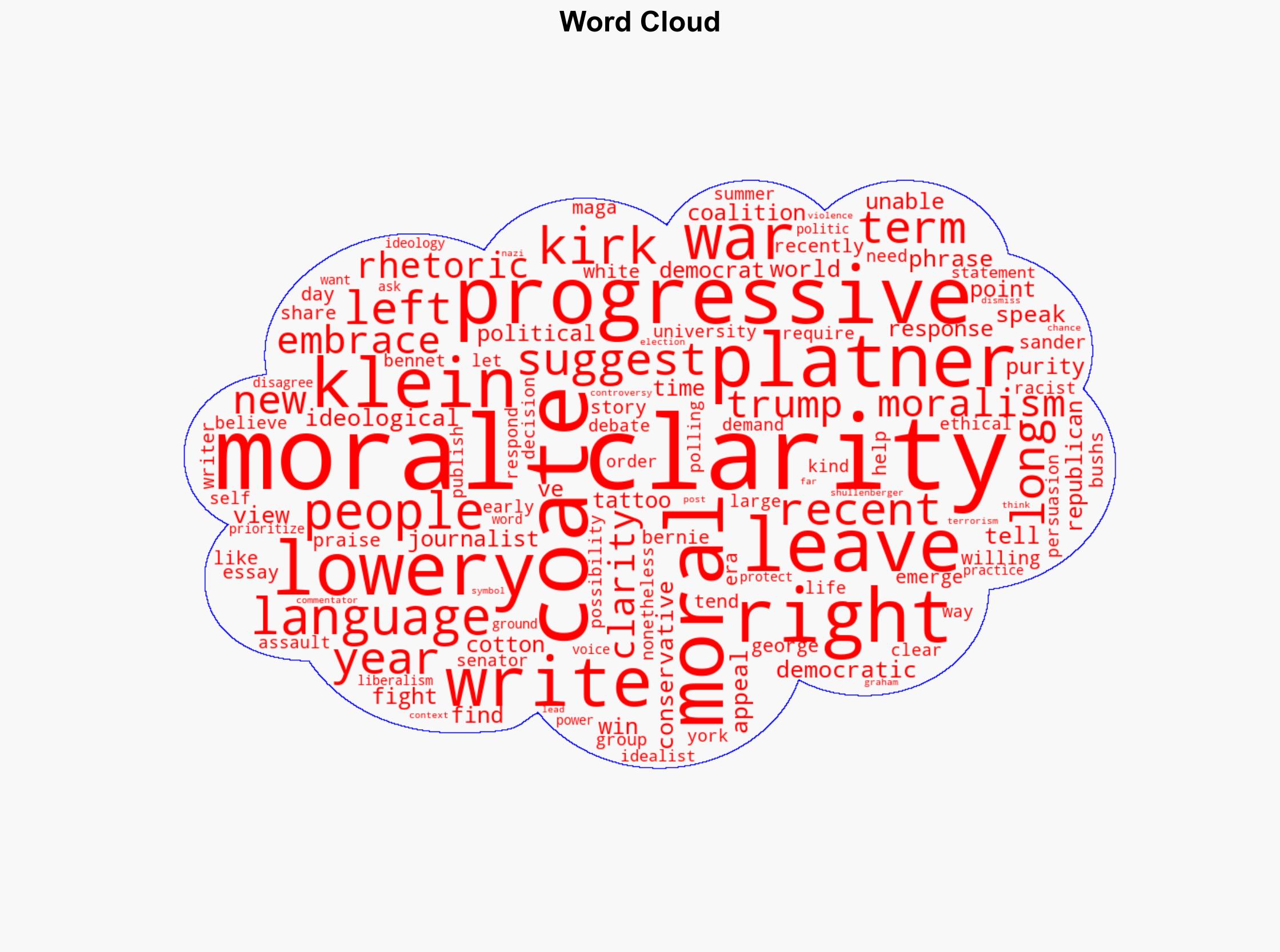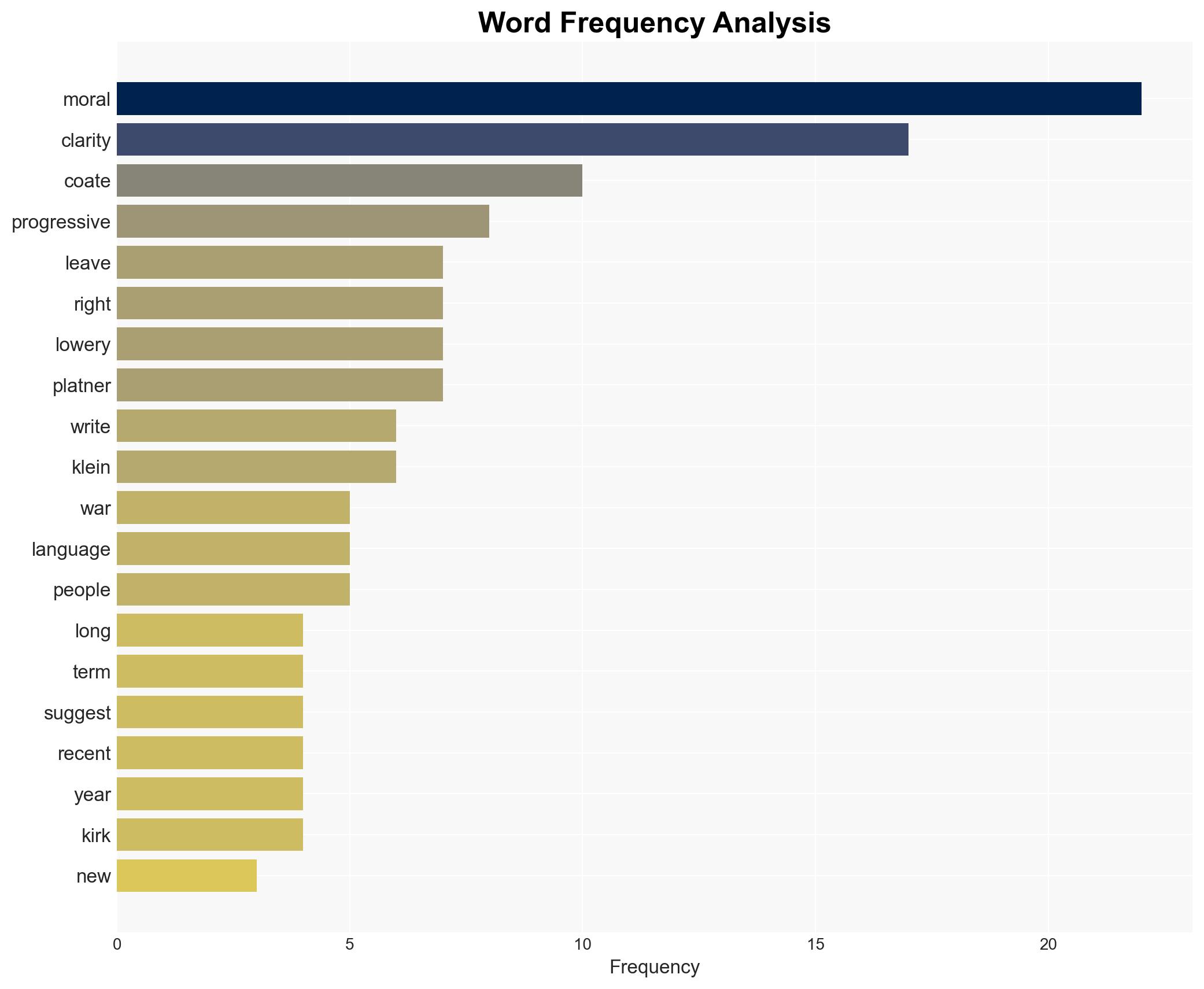The Problem With Moral Clarity – The Atlantic
Published on: 2025-11-13
AI-powered OSINT brief from verified open sources. Automated NLP signal extraction with human verification. See our Methodology and Why WorldWideWatchers.
Intelligence Report: The Problem With Moral Clarity – The Atlantic
1. BLUF (Bottom Line Up Front)
The strategic analysis suggests that the progressive embrace of moral clarity rhetoric is a double-edged sword. It may strengthen ideological cohesion among supporters but risks alienating potential allies and moderates, potentially undermining broader political objectives. The most supported hypothesis is that moral clarity, while appealing for its decisiveness, could hinder pragmatic coalition-building necessary for sustained political success. Confidence level: Moderate.
2. Competing Hypotheses
Hypothesis 1: The use of moral clarity rhetoric by progressives will galvanize their base, leading to increased political mobilization and success.
Hypothesis 2: The emphasis on moral clarity will alienate moderates and potential allies, ultimately hindering the progressive movement’s ability to achieve broader political objectives.
Hypothesis 2 is more likely, as the evidence suggests that moral clarity rhetoric, while energizing, often polarizes and reduces the potential for compromise and coalition-building, key components for political success in a diverse electorate.
3. Key Assumptions and Red Flags
Assumptions include the belief that moral clarity inherently leads to polarization and that the electorate is responsive to nuanced political discourse. A red flag is the potential for confirmation bias, as the analysis may overemphasize the divisive nature of moral clarity without fully considering its unifying potential within certain demographics. Deception indicators include the possibility of strategic rhetoric being used to mask underlying political agendas.
4. Implications and Strategic Risks
The embrace of moral clarity could lead to increased political polarization, reducing the effectiveness of bipartisan initiatives. This polarization may escalate into informational warfare, where narratives are weaponized to further entrench divisions. Economically, a divided political climate may hinder legislative progress on critical issues, impacting market stability. Cyber threats could exploit these divisions, targeting ideological groups to sow further discord.
5. Recommendations and Outlook
- Encourage progressive leaders to balance moral clarity with pragmatic discourse to broaden appeal.
- Foster dialogue between ideological groups to mitigate polarization and enhance coalition potential.
- Monitor media narratives for signs of manipulation that could exacerbate divisions.
- Best-case scenario: Moral clarity unites the progressive base without alienating moderates, leading to electoral success.
- Worst-case scenario: Increased polarization leads to legislative gridlock and societal unrest.
- Most-likely scenario: Progressive rhetoric energizes the base but struggles to expand its appeal beyond core supporters.
6. Key Individuals and Entities
Kamala Harris, Alexandria Ocasio-Cortez, Bernie Sanders, Donald Trump, Tom Cotton, Wesley Lowery, James Bennet, Ta-Nehisi Coates, Ezra Klein.
7. Thematic Tags
National Security Threats, Political Polarization, Ideological Rhetoric, Coalition Building
Structured Analytic Techniques Applied
- Cognitive Bias Stress Test: Expose and correct potential biases in assessments through red-teaming and structured challenge.
- Bayesian Scenario Modeling: Use probabilistic forecasting for conflict trajectories or escalation likelihood.
- Network Influence Mapping: Map relationships between state and non-state actors for impact estimation.
Explore more:
National Security Threats Briefs ·
Daily Summary ·
Methodology





